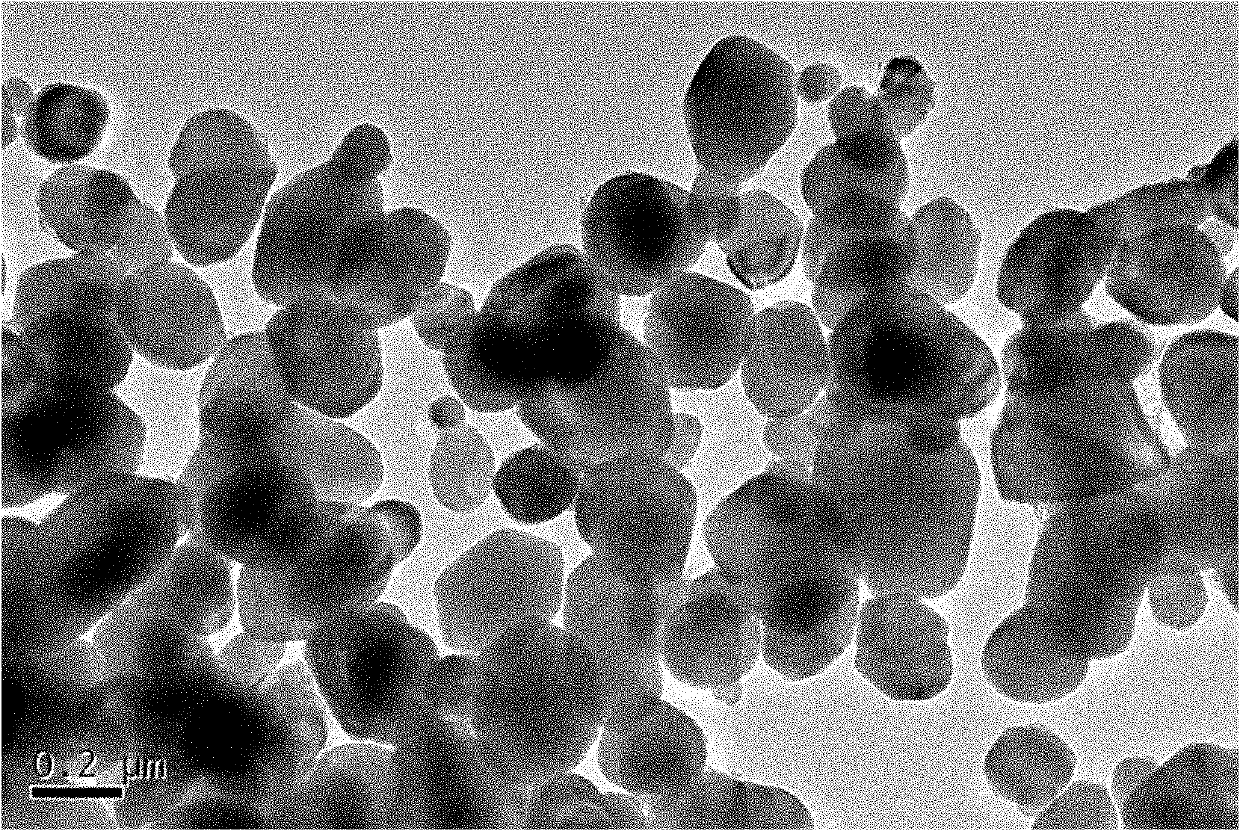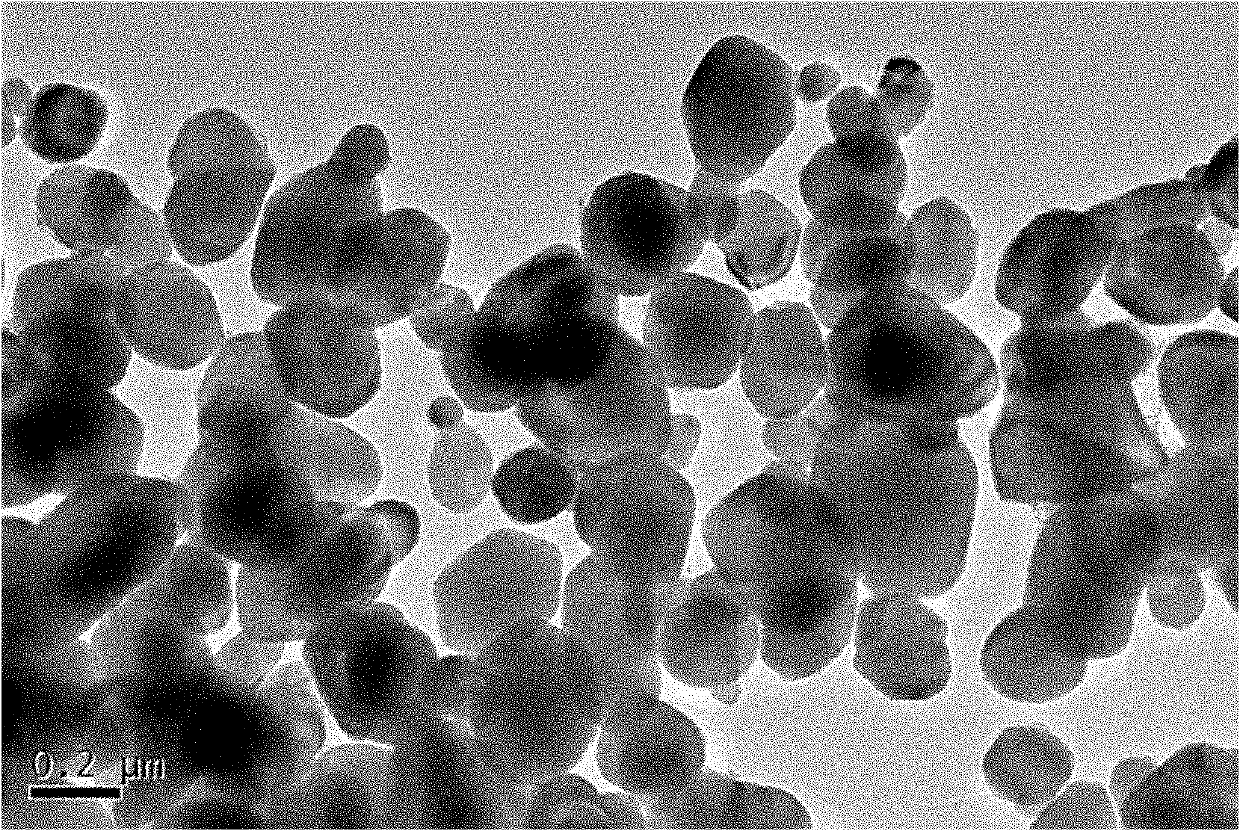Method for preparing modified glass microspheres
A technology of modification of glass microspheres, applied in the field of solar cells, can solve the problems of less research and achieve the effect of ensuring compactness
- Summary
- Abstract
- Description
- Claims
- Application Information
AI Technical Summary
Problems solved by technology
Method used
Image
Examples
Embodiment 1
[0017] 1) First mix 0.1mol titanyl sulfate and water at 15-20°C with a titanium ion concentration of 2mol / L, then let it stand for 12 hours for clarification, filter and co-precipitate with 1mol / L ammonia water and titrate to 200ml deionized In water, until the pH value is equal to 7, the obtained white precipitate is centrifuged and washed until it is washed with Ba(NO 3 ) 2 The solution had no detectable residual SO 4 2- ions, then at 60°C, press Ti 4+ : oxalic acid: the molar ratio of hydrogen peroxide is 1: 5: 5 is dissolved, and then the pH value of this solution is adjusted to 7-8 with ammonia water, obtains titanium dioxide sol precursor after standing for 12 hours;
[0018] 2) Then, the titanium dioxide sol precursor was hydrothermally treated in a hydrothermal kettle at 90° C. for 20 hours to obtain a yellow anatase phase titanium dioxide sol;
[0019] 3) Finally, glass beads with an average particle size of 350nm are mixed with the anatase phase titanium dioxide ...
Embodiment 2
[0021] 1) First, 0.1mol of TiCl 4 With 400ml of 1mol / L NaHCO 3 Co-precipitate and titrate the white precipitate obtained in 100ml deionized water, centrifuge and wash 3 times, and then press Ti at 50°C 4+ :, citric acid: the molar ratio of hydrogen peroxide is 1: 5: 6 to dissolve, and then the pH value of this solution is adjusted to 7-8 with ammonia water, after standing for 12 hours, the titanium dioxide sol precursor is obtained;
[0022] 2) Then, the titanium dioxide sol precursor was hydrothermally treated in a hydrothermal kettle at 250° C. for 4 hours to obtain a yellow anatase phase titanium dioxide sol;
[0023] 3) Finally, glass microspheres with an average particle size of 350nm were mixed with anatase phase titanium dioxide sol according to 10g / ml, and then placed in an agate ball mill jar, and after ball milling for 24 hours, it was taken out and cooled naturally after heat treatment at 250 degrees for 2 hours to obtain suitable TiO2-modified glass microspheres ...
Embodiment 3
[0025] 1) First titrate the white precipitate obtained in 200ml of deionized water with 0.1mol of titanium sulfate and 400ml of 1mol / L NaOH co-precipitation titration, centrifuge and wash 3 times, and then press Ti at 80°C 4+ :, tartaric acid: the mol ratio of hydrogen peroxide is 1: 10: 10 and dissolves, and then the pH value of this solution is adjusted to 7-8 with ammoniacal liquor, obtains titanium dioxide sol precursor after standing for 12 hours;
[0026] 2) Then, the titanium dioxide sol precursor was hydrothermally treated in a hydrothermal kettle at 160° C. for 6 hours to obtain a yellow anatase phase titanium dioxide sol;
[0027] 3) Finally, mix glass beads with a particle size of 300-700nm with anatase phase titanium dioxide sol at 5g / ml, and then place them in an agate ball mill jar. After ball milling for 24 hours, take them out and heat them at 250 degrees for 2 hours, then cool naturally. TiO2-modified glass microspheres suitable for light scattering of dye-sen...
PUM
| Property | Measurement | Unit |
|---|---|---|
| Particle size | aaaaa | aaaaa |
Abstract
Description
Claims
Application Information
 Login to View More
Login to View More - R&D
- Intellectual Property
- Life Sciences
- Materials
- Tech Scout
- Unparalleled Data Quality
- Higher Quality Content
- 60% Fewer Hallucinations
Browse by: Latest US Patents, China's latest patents, Technical Efficacy Thesaurus, Application Domain, Technology Topic, Popular Technical Reports.
© 2025 PatSnap. All rights reserved.Legal|Privacy policy|Modern Slavery Act Transparency Statement|Sitemap|About US| Contact US: help@patsnap.com



